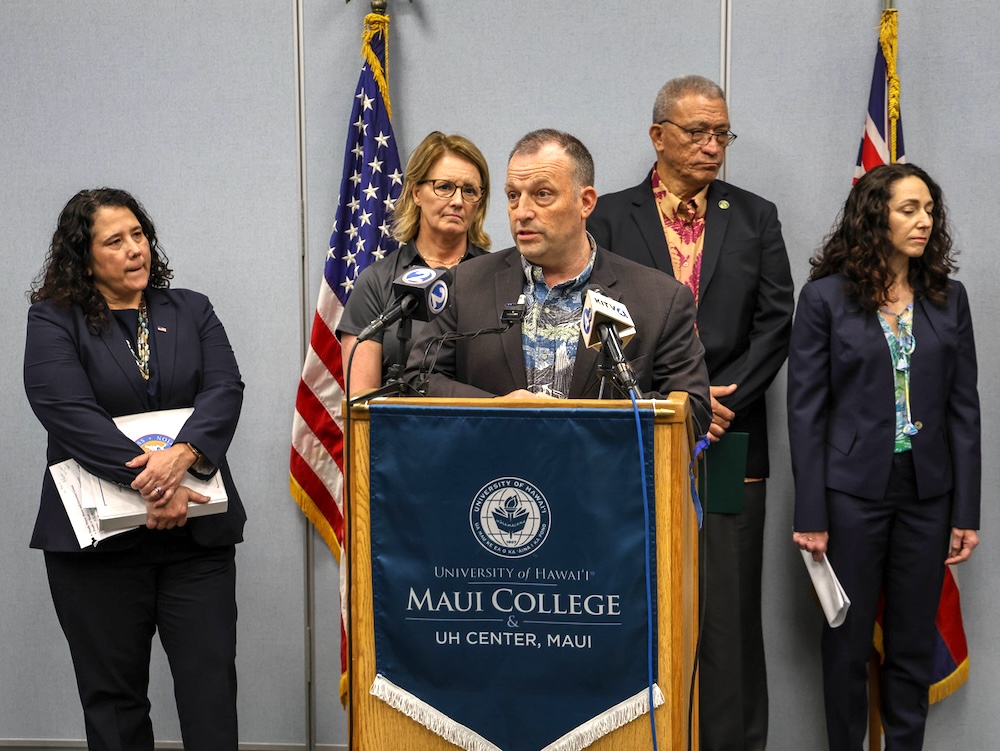6 months after Maui wildfires that killed over 100 including Filipino family of 9

Maui officials address recovery progress, challenges 6 months after wildfires | Photo from FEMA News Desk
Half a year has passed since Maui, Hawaii was engulfed by devastating wildfires, and Lahaina still bears the burden of charred debris, with initiatives to clear it only beginning.
Governor Josh Green, Maui Mayor Richard Bissen and federal officials convened on Feb. 8 to provide an update on recovery efforts, acknowledging the daunting challenges that lie ahead.
The wildfires that struck Lahaina on Aug. 8 claimed the lives of at least 100 people and displaced 9,806 residents, with 3,971 properties reduced to ashes, predominantly homes. Among the mourners are the tight-knit Filipino community, reeling from the loss of nine family members.
According to their updates, in the aftermath, approximately 7,800 survivors sought refuge in temporary hotel accommodations, contending with the trauma and mental health challenges brought on by the disaster.
Governor Green expressed cautious optimism about the ongoing transition of evacuees to more permanent housing solutions, aiming for a hotel-free summer for those who desire alternative accommodations.
But after six months, there are still at least 5,000 survivors who remain stranded, and according to a report by The Guardian, the people in the temporary hotel homes described the hotel as “not a home, it’s a shelter” and are “tired of broken promises.”
Meanwhile, officials from the Federal Emergency Management Agency (FEMA), Environmental Protection Agency (EPA) and Small Business Administration (SBA) reaffirmed their commitment to long-term recovery efforts in the community.
“We continue to work closely with FEMA – as well as Maui County and our federal and nonprofit partners – to put Lahaina on a path to recovery, while making every effort to preserve its distinct culture and sense of community,” Green emphasized.
Debris clearance update
While progress is evident in debris clearance and restoration efforts, significant challenges remain. Excavators and bulldozers continue to clear properties, with a focus on preserving cultural artifacts under the supervision of cultural monitors.
The EPA cleared hazardous materials from the 5-square-mile Lahaina burn zone, while the USACE crews are cleaning residential properties and plan to expand to commercial and public properties by mid-March.
The EPA’s role in hazardous material removal and restoration of essential services, including water supply, underscores the complexity of the recovery efforts.
Despite these challenges, Governor Green reopened Maui to tourists at the end of October last year.
While residents pleaded for a delay until fire survivors were rehoused, he has not yet issued a temporary moratorium, which he floated in December, to convert some of the island’s 27,000 short-term rentals into long-term housing, deeming such action “not likely.” Instead, he has joined other government leaders and nonprofit organizations in unveiling a $500M Maui Interim Housing Plan.

